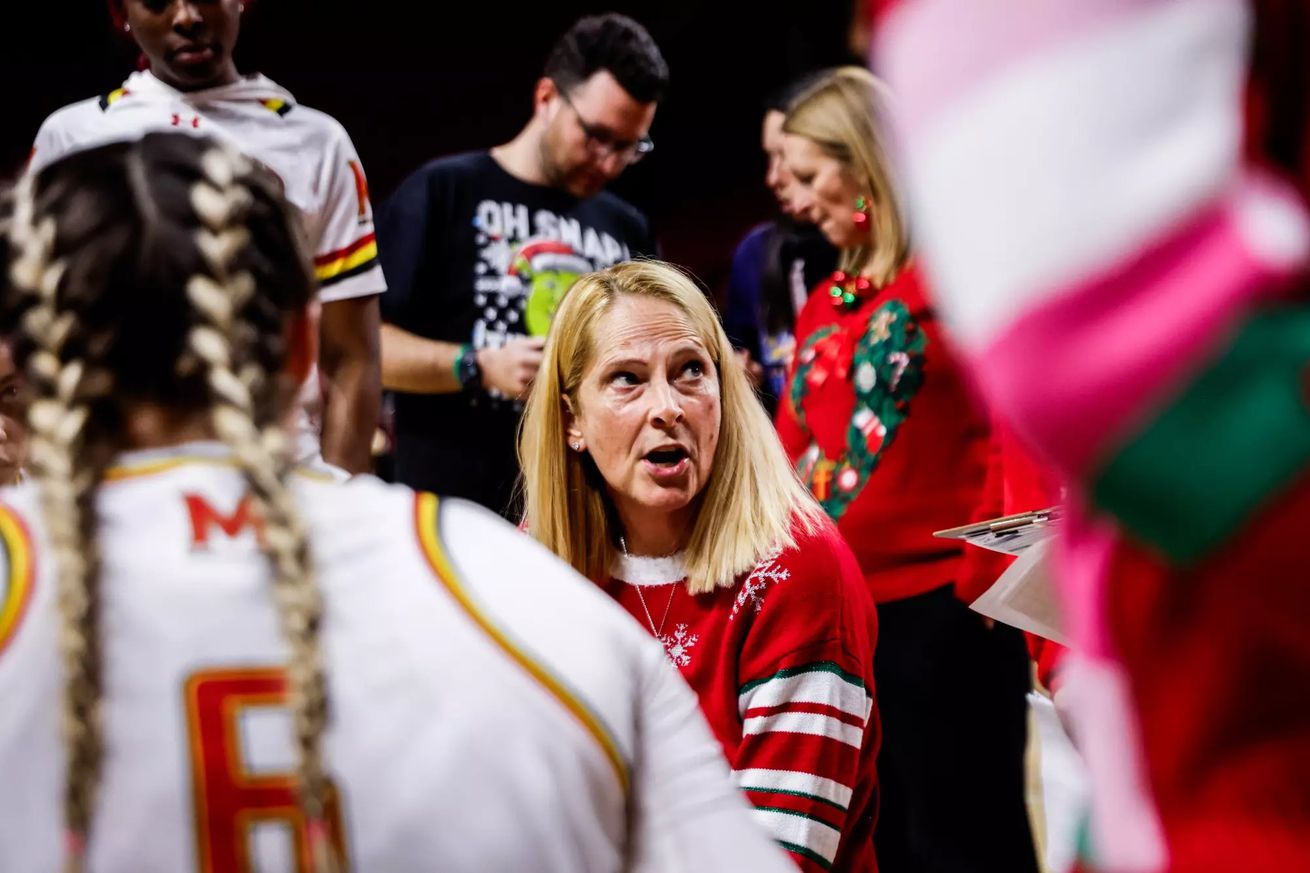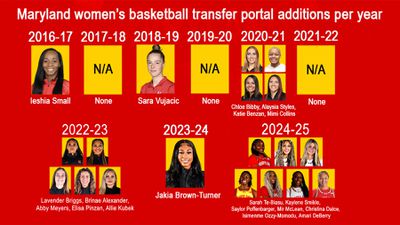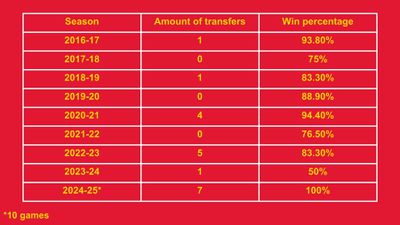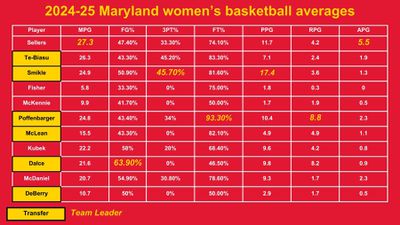
The Terps brought in a program-high seven transfers this offseason.
After No. 7 Maryland women’s basketball’s worst ending to a season since 2009-10, head coach Brenda Frese knew changes were necessary.
The transfer portal has risen to prominence in recent years, but the Terps had not taken full advantage of it. That started to affect its standing as a national powerhouse.
Last season, Maryland added only one transfer: Jakia Brown-Turner from N.C. State. Brown-Turner was one of Maryland’s most impactful players, averaging 13.5 points per game, the second-most on the team. But the lack of further transfer additions aided a disappointing season.
Building pressure forced Frese to take action. Heading into this year, Maryland brought in the seven transfers in hopes to rejuvenate the program. It was the largest transfer class in program history, and the Terps parlayed it into a 10-0 start.
“They come in with a work ethic, a place of gratitude, understanding that the staff just wants to push them to be the very best, and they want to be pushed,” Frese said. “I just love the competitiveness. They all bring in a championship pedigree. They’ve won a lot and that adds to our culture and our program.”
Frese has used the portal in the past, but never to this extent. Over the last nine seasons, the Terps have brought in 19 transfers, including the seven this season, five in 2022-23 and four in 2020-21. In the six other seasons, Maryland never brought in more than one transfer.

Photos courtesy of Maryland Athletics. Graphic by Ben Messinger.
The eminent trend over the past nine seasons shows when Maryland brings in more transfers than the previous year, the team’s winning percentage improves. The 2019-20 season was the only year Maryland saw its winning percentage improve with fewer transfers.

Ben Messinger
In that span, Maryland made the NCAA Tournament every season there has been one, and has gone as far as the Elite Eight in 2022-23, when the Terps brought in five transfers — the most prior to this season.
What does that mean for this year’s team?
Four of Maryland’s seven transfers — Sarah Te-Biasu, Kaylene Smikle, Christina Dalce and Saylor Poffenbarger — are in Frese’s seven-player rotation. Mir McLean and Amari DeBerry are also fringe-rotation players, as their playing time fluctuates from game to game. Isimenme Ozzy-Momodu is redshirting this season.
“Ultimately, putting this roster together with this kind of competition is really good for us,” Frese said at media day.
Smikle, Poffenbarger and Dalce all average at least 9.8 points per game — top four on the team. Poffenbarger, Dalce and McLean are Maryland’s top three rebounders, addressing a massive flaw of last year’s team: a lack of size.
As well, a transfer leads the team in shooting percentage, 3-point percentage, free-throw percentage, points per game and rebounds per game.

Ben Messinger
Completely revamping a roster during the offseason through transfers isn’t a traditional approach, and Frese has not done it in her previous 22 seasons at Maryland.
“We knew what we needed to go get if it was available. And fortunately for us, it was in the transfer portal,” Frese said at media day. “The pieces that we were able to get were all the right pieces.”
The portal’s current form — without the requirement to sit out a season — has been around since 2021. Prior to this season, Frese welcomed in 10 transfers under those guidelines, but the backbone of her roster was still built on recruiting.
This is the first year transfer additions outweigh high school recruits, with eight transfers and seven high school recruits. But in some ways, it was a necessity for Maryland. Of the six freshmen from last year’s team, only one is still on the roster. The Terps also had four graduate students last year, all of which are no longer with the team.
“These are rosters now that are one-year rosters, and so the team building and the bonding piece for us is going to be something that we do all the time,” Frese said at media day. “It’s always been a part of our culture and our program.”
Frese used the portal to address specific needs, rather than just bringing in the highest-ranked players.
“For us, it was being able to go after where we felt we had some deficiencies last year,” Frese said at media day. “You can see that with the size, the rebounding, the depth, the 3-point shooting, the scoring ability, having an ultimate true point guard.”
Poffenbarger was perceived as Maryland’s top transfer and decided to come home after stints with UConn and Arkansas. She also brought 3-point shooting, scoring, rebounding and size, all of which were needs for the Terps.
Dalce won Big East Most Improved Player last season at Villanova and brought an inside presence Maryland desperately needed, along with strong defense. Te-Biasu was the Atlantic 10 Player of the Year last season at VCU. She is a primary ball-handler that brings tenacity and speed to the team.
McLean spent time at UConn and Virginia before coming to Maryland. She was a top-rated recruit out of high school that hadn’t quite found her stride, and came to Maryland off an injury. DeBerry also hails from UConn and is 6-foot-6, while Ozzy-Momodu was a junior college All-America third-team honoree.
Given the roster turnover, Maryland’s perfect record and ranking is even more impressive. The competition will undoubtedly get tougher and test the team. But failure or success, this season may serve as the key determiner for how Frese builds the roster for years to come.
“If we can stay healthy, it’s going to be exciting to see where we’ll end up,” Frese said.
